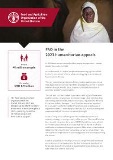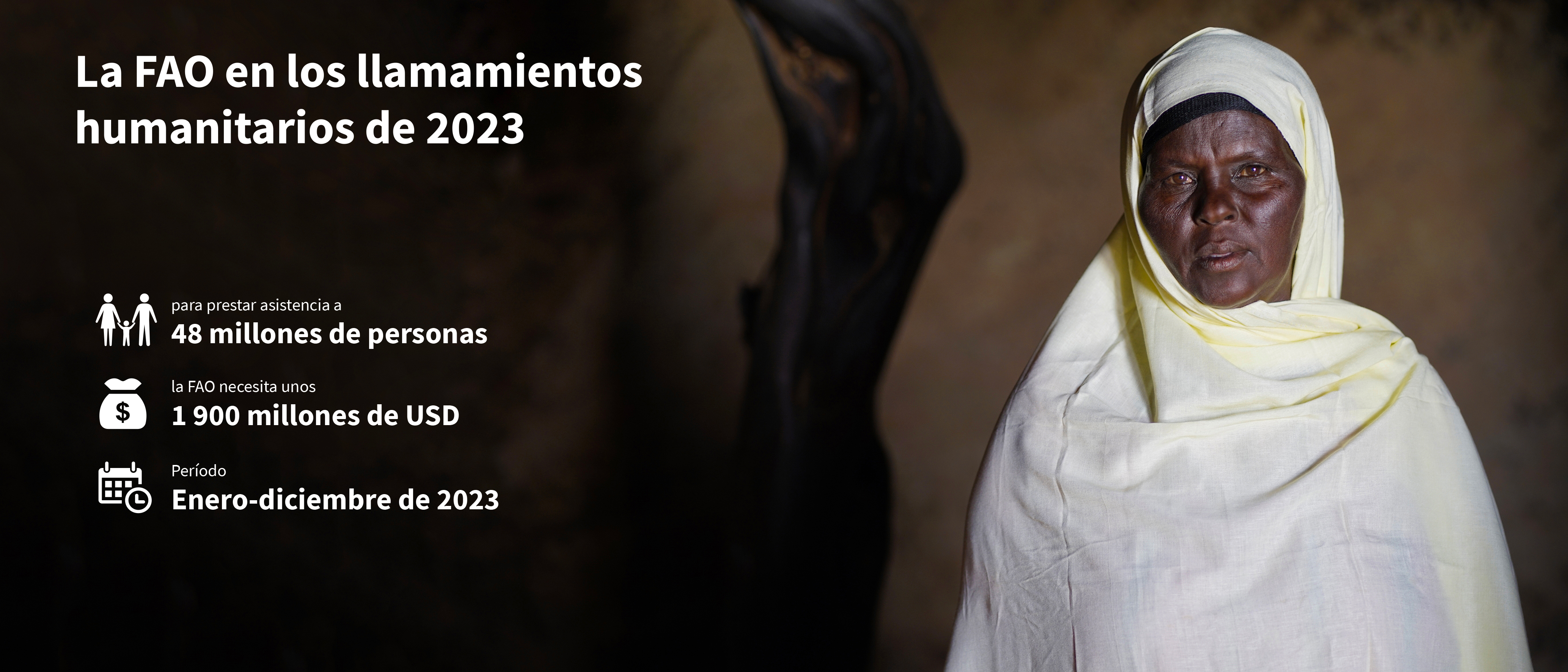
| En todo el mundo, 222 millones de personas están sufriendo una grave inseguridad alimentaria aguda, y casi una de cada cinco de ellas tiene dificultades para acceder a alimentos suficientes para sobrevivir al día. Son principalmente agricultores, pescadores, pastores y silvicultores, cuyos medios de subsistencia más básicos se han visto devastados por conflictos o fenómenos meteorológicos extremos (sequías e inundaciones), plagas, enfermedades o la constante perturbación derivada de la inestabilidad y las turbulencias económicas. La ayuda agrícola es ayuda humanitaria que salva vidas. Las intervenciones agrícolas urgentes y en las que el tiempo apremia, en especial cuando se combinan con asistencia alimentaria y en efectivo, tienen enormes repercusiones en la disponibilidad de alimentos, la nutrición y el desplazamiento, entre otras cosas, con lo que reducen notablemente otros costos humanitarios. Lo que resulta más importante es que estas intervenciones están orientadas a las necesidades y prioridades de las comunidades afectadas, lo que les permite permanecer en sus hogares cuando es seguro hacerlo, satisfacer sus propias necesidades y dirigir su propia recuperación futura. En el marco de los llamamientos humanitarios de 2023, la FAO necesita 1 900 millones de USD para ayudar a casi 50 millones de personas a obtener acceso a un suministro estable de alimentos nutritivos, facilitar su recuperación y sentar las bases de la resiliencia ante futuras perturbaciones. |
A fondo

Afghanistan: Humanitarian Response Plan 2023
06/2023
Climatic, political and economic shocks continue in Afghanistan, where two out of every five people face high levels of acute food insecurity.
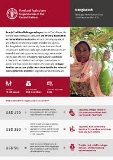
Bangladesh: Rohingya Humanitarian Crisis Joint Response Plan 2023
06/2023
Nearly 1 million Rohingya refugees live in Cox’s Bazar, the world’s largest refugee camp, and are entirely dependent on humanitarian assistance.

Burkina Faso: Humanitarian Response Plan 2023
03/2023
In Burkina Faso, over 16 percent of the population is expected to be in high acute food insecurity during this year’s lean season, if appropriate assistance isn’t provided.
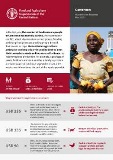
Cameroon: Humanitarian Response Plan 2023
04/2023
In the last year, the number of food insecure people in Cameroon has risen by 800 000. Intercommunity conflict, attacks by non-state armed groups, flooding and rising food prices are pushing people beyond their means to cope.
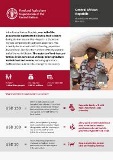
Central African Republic: Humanitarian Response Plan 2023
04/2023
In the Central African Republic, over half of the population is expected to be acutely food insecure during the lean season (May–August) – a 27-percent increase compared with last year’s projection.
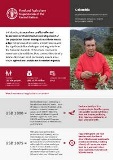
Colombia: 2023 Humanitarian Response Plan (HRP); 2023 Regional Refugee and Migrant Response Plan (RMRP)
05/2023
In Colombia, six out of ten conflict-affected households are food insecure and 26 percent of the population do not manage to eat three meals a day.
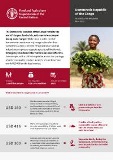
Democratic Republic of the Congo: Humanitarian Response Plan 2023
04/2023
The Democratic Republic of the Congo remains the world’s largest food crisis, with one in four people facing acute hunger.
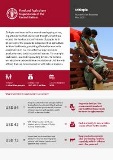
Ethiopia: Humanitarian Response Plan 2023
06/2023
Ethiopia continues to face several overlapping crises, in particular conflict and record drought, which have resulted in poor crop production, limited access to markets to buy and sell produce, loss of income and high levels of malnutrition and food insecurity.

Guatemala: Humanitarian Response Plan 2023
04/2023
In Guatemala, food security and nutrition needs are at their highest in recorded history.

Haiti: Humanitarian Response Plan 2023
03/2023
Nearly half of the population in Haiti doesn’t have enough to eat, including for the first time ever 19 200 people in Catastrophe (IPC Phase 5).

Lebanon: Crisis Response Plan 2023
05/2023
Lebanon is facing one of the most severe economic crises in the world in addition to a protracted refugee crisis. Inflation has skyrocketed and unemployment has reached an all-time high.
.tmb-th600x450.jpg?Culture=fr&sfvrsn=4af57e01_1)
Mali: Humanitarian Response Plan 2023
04/2023
Mali faces a severe humanitarian crisis driven by years of armed conflict, climatic hazards and high staple food prices.

Mozambique: Humanitarian Response Plan 2023
03/2023
This document provides an overview of FAO's component of the 2023 Humanitarian Response Plan for Mozambique.
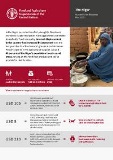
Niger: Humanitarian Response Plan 2023
03/2023
In the Niger, persistent conflict, droughts, floods and increased staple food prices have aggravated vulnerable households’ food insecurity.

Northeastern Nigeria: Humanitarian Response Plan 2023
04/2023
The insurgency in northeastern Nigeria remains a significant driver of the humanitarian crisis. Severe flooding across the country in 2022 devastated crops and livestock.
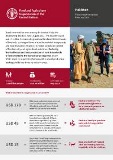
Pakistan: Floods response update, February 2023
03/2023
Rural communities of Pakistan were among the hardest hit by the devastating floods of June–August 2022.
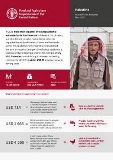
Palestine: Humanitarian Response Plan 2023
05/2023
In 2023, more than a quarter of the population is estimated to be food insecure in Palestine.
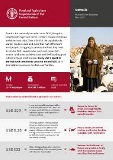
Somalia: Humanitarian Response Plan 2023
05/2023
Somalia has endured poor rains since 2020, alongside exceptionally high food prices, conflict, disease outbreaks and other hardships.
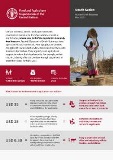
South Sudan: Humanitarian Response Plan 2023
04/2023
Climate extremes, conflict and a poor economic environment continue to drive humanitarian needs in South Sudan, where over half of the population is acutely food insecure.
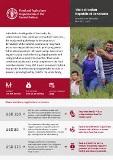
The Bolivarian Republic of Venezuela: Humanitarian Response Plan 2022-2023
07/2023
In the Bolivarian Republic of Venezuela, the socioeconomic crisis continues to drive food insecurity – the most pressing challenge for the population.

